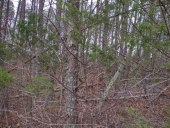


The Humble Soapnut - A Guide to the Laundry Detergent that Grows on Trees ebook by Kathryn Ossing
will be released to subscribers in:
soon!











 1
1




Aim High. Fail Small.
Repeat.
 2
2








"You must be the change you want to see in the world." "First they ignore you, then they laugh at you, then they fight you, then you win." --Mahatma Gandhi
"Preach the Gospel always, and if necessary, use words." --Francis of Assisi.
"Family farms work when the whole family works the farm." -- Adam Klaus
 3
3




James 1:19-20
Not all those who wander are lost - J. R. R. Tolkien




John Daley Bendigo, Australia The Enemy of progress is the hope of a perfect plan
Benefits of rainfall collection https://permies.com/t/88043/benefits-rainfall-collection
GOOD DEBT/ BAD DEBT https://permies.com/t/179218/mortgages-good-debt-bad-debt




SKIP books, get 'em while they're hot!!! Skills to Inherit Property
 4
4




 1
1




John C Daley wrote:How on earth are people going to sleep in this cabin, if its 56 inch across inside.
Aim High. Fail Small.
Repeat.
 2
2




Aim High. Fail Small.
Repeat.




 1
1




Aim High. Fail Small.
Repeat.








Aim High. Fail Small.
Repeat.





|
I'm still in control here. LOOK at this tiny ad!
Unlock Free Wood Plans! Download free projects and create unique pieces now!
https:/the-art-of-regenerative-wood-working/
|



